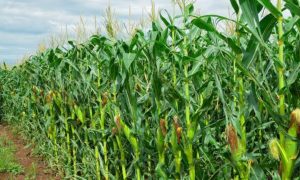US spring wheat tour forecasts record yields for southern North Dakota

Scouts on the 2024 U.S. crop tour forecasted record spring wheat yields of 52.5 bushels per acre in southern and east-central North Dakota. This surpasses the previous day-one average of 48.1 bushels in 2023 and exceeds the five-year average of 42.2 bushels. Despite high yields, some fields were affected by fusarium head blight, which can impact both yield and grain quality. The final yield estimate will be released on July 25 after assessing northern North Dakota.
MANDAN, North Dakota, July 23 (Reuters) –
Scouts on the first day of an annual U.S. crop tour on Tuesday projected spring wheat in southern and east-central North Dakota will produce the highest yields in tour records dating to 1994.
The Wheat Quality Council tour said participants estimated an average hard red spring wheat yield of 52.5 bushels per acre, compared to the tour’s day-one findings in 2023 of 48.1 bushels. The five-year average is about 42.2 bushels, excluding 2020 when no tour was held because of the COVID-19 pandemic.
A strong spring wheat crop from the United States, the No. 4 exporter, could help resupply global stocks of the grain that the U.S. Department of Agriculture (USDA) expects to tighten to a nine-year low.
North Dakota is the largest producer of U.S. spring wheat, the smaller of two annual harvests in the United States.
“It’s very nice, everything looks very green, and North Dakota looks beautiful,” Brian Walker, member of the Wheat Quality Council, said.
Nearly all scouting groups noted some fields had been stricken by fusarium head blight, also known as scab, which can decimate yields and cause vomiting if consumed by animals or humans.
USDA on Monday rated 77% of the total U.S. spring wheat crop as good to excellent, unchanged from the previous week.
The tour will assess fields in northern North Dakota on Wednesday before releasing a final yield estimate on Thursday.

















